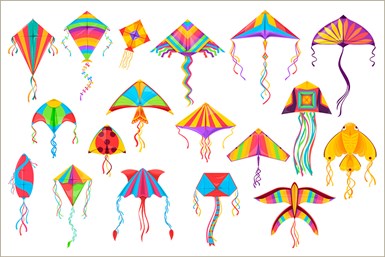Product Advertising. It’s all about the now
Product marketing strategy depends on quick-hitting, powerful messaging in the right places at the right time.
#brandbuilding

By Mark Semmelmayer, CBC
Chief Idea Officer
Pen & Inc. Marketing Communications
For my last blog, Maralah Rose-Asch, Editor and Publisher of the Gardner Manufacturing Marketer asked me to explore brand advertising, with a follow-on article on the ins and outs of product advertising. Always one to honor a friend’s request, here we go.
On a very interesting website, www.business2community.com, author Tom Whatley offered a pretty good definition of the role of product marketing. In his view, it’s responsible for tasks like:
- Developing and executing go-to-market (GTM) strategies
- Researching and understanding target segments
- Analyzing competitor activities
- Developing product value propositions
- Defining messaging strategies
- Ensuring marketing teams and salespeople understand the product features
It’s easy to see that, in both his and my opinion, the strategic focus of product marketing is about the here and now. In fact, what he lays out is a virtual product campaign template. That “here and now” element differentiates it from the long-term focus of brand marketing.
As said in the last blog, B2B marketing luminaries from Don Schultz to Bob Lauterborn and more, defined brand in these terms. A product is something that solves a customer’s need. A brand is that product they think solves it best.

Product marketing fills the void between product and brand. To borrow an old analogy, product marketing is all about selling the proverbial better mousetrap. The product that fills a need with rapidity, positioned as the first of its kind, is the ideal subject for a product marketing campaign. We don’t have to look back too far for good references.
Think back a few months, to the teeth of the COVID pandemic. Think about all the products seen or heard, in print, broadcast or online advertising, for COVID mitigation. There were touchless pointers for keypads or screens, sanitizers for every kind of surface, and masks, everywhere masks. If there was even a small differentiator in a mask, the marketer was on it and into your head with it, very quickly.
Masks are perhaps the best example of product-based marketing in this regard. Legitimate masks for infection control have been around for a long time. Sold by branded marketers like J&J, Kimberly-Clark and 3M, they are branded for professional and healthcare markets. That was their target, not the consumer market. But COVID demand rapidly outstripped their ability to supply.
Enter the entrepreneurial product marketer!
If you were an individual or company, with access to fabric and materials and a capability to sew, you were in the mask business. Comfort masks, no-lose masks, copper fiber masks, anything that could make it a needed-now product was put in play. It didn’t make any difference if they were at all effective (and most weren’t), the world was in a panic and wanted a fix, now! And billions of dollars’ worth of them were sold.
OK, now for the core of the lesson. These masks were almost all sold with a name of some kind attached to them and advertised heavily. Bet 99% of you can’t recall a single one. I sure can’t.
That’s product marketing of the highest . . . or maybe lowest . . . order, but you get my drift.
In the last piece on brand marketing, I, stumbled on a concept that put brand marketing in perspective. Mental availability. Basically, brand marketing is about creating ‘brand-relevant memories.’ That builds mental availability – making a brand ‘top of mind’ for future buying situations.

Product marketing is, in a sense, the antithesis. It’s a matter of, to coin a phrase, mental immediacy. Product marketing focuses on product features that make a difference to the buyer right now. That’s what makes Mr. Whately’s hierarchy functional for a product marketing campaign. It ensures focus on the here and now. And sale and profits now, while the iron is hot.
Ideally, one can take a successful product campaign and extend its reach by evolving it into a brand strategy. A successful product “hit” with a buyer is like a handshake. An invitation to a brand friendship. But creating a brand friendship carries a promise. The brand will always be one a buyer can rely on. Step 1 in brand building.
In a nutshell, product marketing is about creating and placing messaging for a needed product that is “firstest and fastest” in the buyers’ mind. Assuring them you can meet their need now. Executed well, with the right product, a product marketing strategy can become a brand marketing strategy, opening the door for new product introductions and the stability an established brand brings to sales and marketing efforts.
Need more information?
Mark Semmelmayer, CBC
Chief Idea Officer
Pen & Inc. Marketing Communications
Saint Simons Island, GA
770-354-4737
LinkedIn
About the Author
Mark Semmelmayer, CBC
Mark is a past international chairman of the Business Marketing Association (BMA), the 2015 recipient of BMA’s prestigious G.D. Crain Award and an Inductee into the Business Marketing Hall of Fame. A 40-year B2B marketing pro, including 32 years with Kimberly-Clark, he’s the founder and Chief Idea Officer of Pen & Inc. Marketing Communications, a consultancy in Saint Simons Island, GA.
RELATED CONTENT
-
"Made in the USA" Podcast: Show for This Moment in U.S. Manufacturing
“Made in the USA,” is a six-part documentary-style podcast series that strives to uncover the hidden history of how manufacturing in the United States arrived at its current state and lays out where it can go from here.
-
How to Write a B2B Marketing Email That Works
B2B copywriter David McGuire shares four tips to help stand out in a crowded inbox. He tries to stick to these four key principles when writing emails.
-
Brand vs. Product Advertising. What’s the Fuss?
Marketers have long debated the merits of brand vs. product advertising. In truth, there are reasons for both. The strategy depends on the marketing situation.


